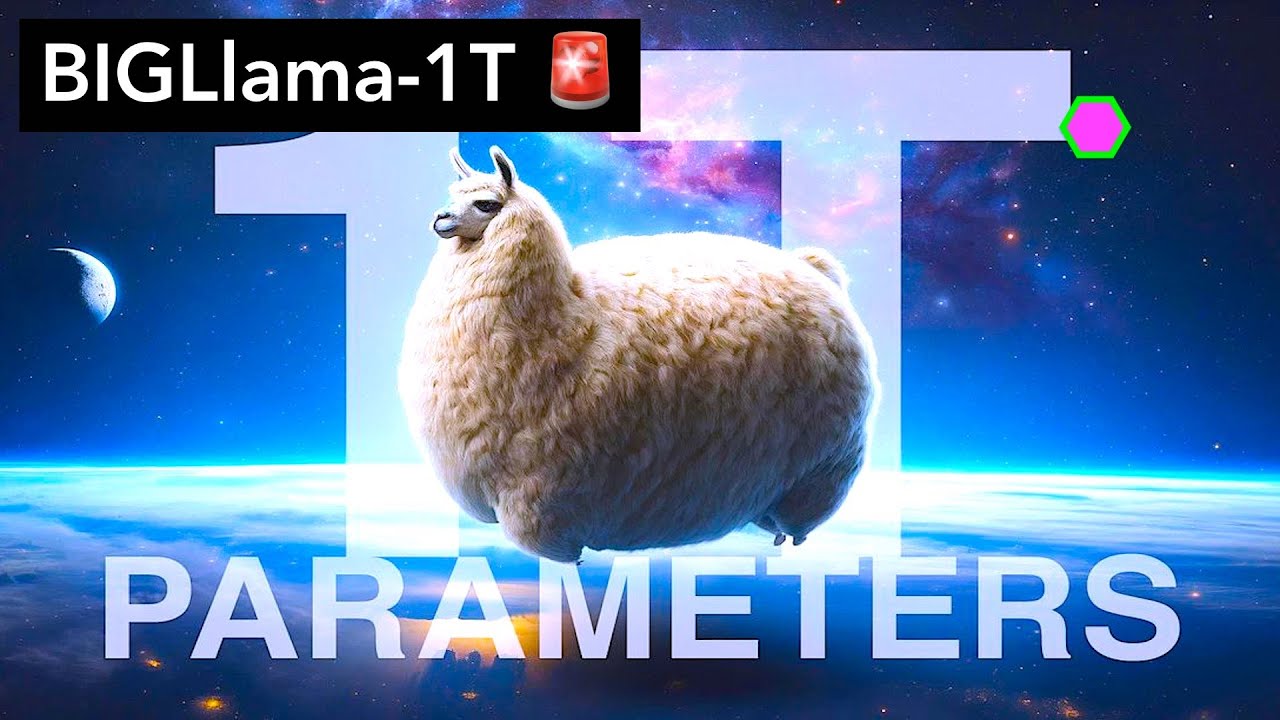The video introduces the BigLlama-3.1-1T-Instruct, a groundbreaking AI model with 1 trillion parameters achieved through merging various versions of the Llama 3.1 405b model, showcasing improvements in creative writing and coding tasks. It also highlights recent updates from Meta that enhance the efficiency of the Llama 3.1 model, while the presenter expresses excitement for future developments and invites viewers to share their experiences with the new models.
The video discusses the recent development of a groundbreaking AI model known as BigLlama-3.1-1T-Instruct, which boasts an impressive 1 trillion parameters. This model, created by Max Leon, is a self-merge of various versions of the existing Llama 3.1 405b model. While the idea of a trillion-parameter model may seem like a joke, it has been successfully implemented, and there are smaller versions available for those who may not have the GPU capacity to handle such a massive model. The video highlights the quirky performance improvements seen in these large models, particularly in creative writing, while also noting their limitations in areas requiring higher accuracy, such as programming.
The BigLlama model is not trained on 1 trillion tokens but is instead a representation of 1 trillion parameters achieved through merging. This experimental self-merge utilizes a tool called Merge Kit and combines different versions of Llama 3.1 405b. The video emphasizes that, unlike previous large models that often yielded poor results, the Llama 3.1 series has shown promising applications, particularly in creative writing. The long context window of these massive models contributes to their performance, and the presenter is eager to test the model’s capabilities once they have access to the necessary GPU resources.
Interestingly, the video mentions that a smaller version of the BigLlama model, with 681 billion parameters, has also been created. This smaller model has demonstrated improved performance in coding tasks, which was a weakness in earlier versions. The presenter notes that merging models previously made it difficult to maintain focus, but the structure of Llama 3.1 has inverted this trend, allowing for better task management. The anticipation for benchmarks and further insights into the model’s performance is palpable, as the presenter awaits additional GPU support.
In addition to the BigLlama model, the video highlights recent updates from Meta regarding the Llama 3.1 405b model. Meta has released a more efficient version of this flagship model, which is about 20% more efficient in terms of VRAM usage. The changes include a reduction in the number of KV heads from 16 to 8, which, contrary to expectations, has not negatively impacted performance. Instead, this adjustment has led to a more efficient use of VRAM, allowing for faster inference and improved overall performance.
The video concludes with a call to action for viewers to share their experiences with the new models and to stay tuned for upcoming content, including an interview with the founders of BRX. The presenter expresses excitement about the potential for better quantization and faster model merges in the future, emphasizing the importance of architectural improvements in enhancing the performance of large language models. Overall, the video provides an engaging overview of the latest advancements in AI model development and their implications for the field. So I’ve heard that 405B parameters weren’t enough…
Our Llama 3.1 405B model has undergone a massive upgrade, merging into a 1 trillion parameter behemoth! Unlike other large language models, this breakthrough focuses on exceptional coding capabilities and continues to refine its already impressive creative writing skills. Get ready to experience the next level of AI, designed to excel in both technical and artistic realms.
Let us know what you think in the comments below!
